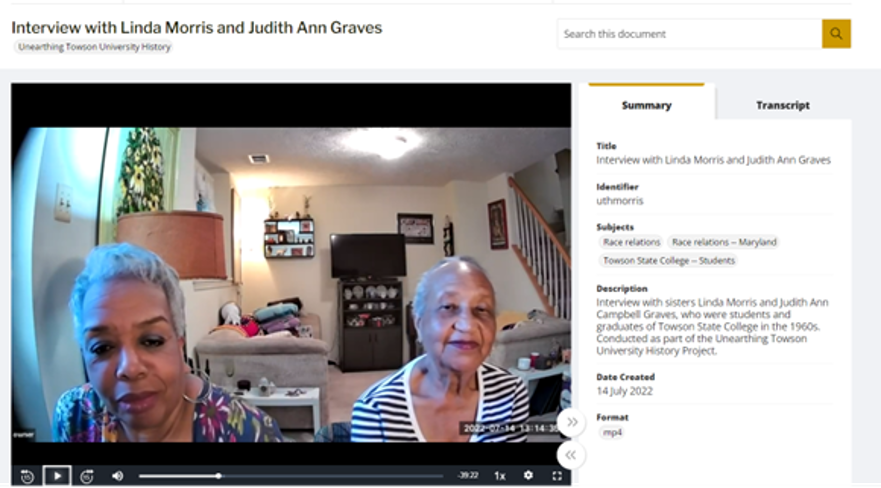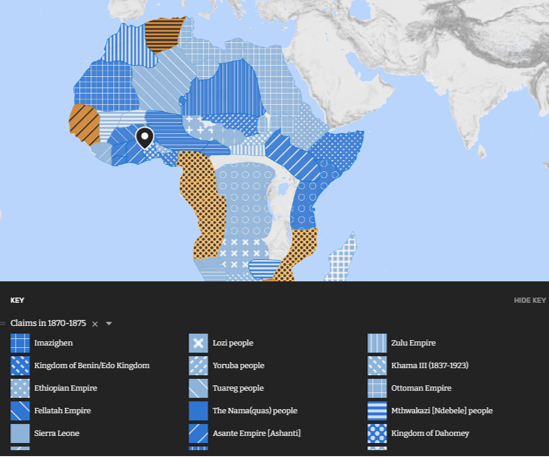Embedding accessibility into digital collections: Putting theory into practice
As digital publishers and the creators of Quartex, the platform on which our own digital collections and those of our external partners are built, we take our responsibilities to all our user communities very seriously.
We are knowledgeable about and committed to accessibility, and continue to develop the platform with it in mind. Feedback and ideation from our external community is intrinsic to this process.
Towson University are a great example. When its library team was looking for a platform to showcase its digital collections, accessibility was front and centre of the procurement process. We worked with the team to ensure its brand colours were applied with appropriate colour contrast in different areas of the site, and made some updates to our in-platform image viewer to make sure it met WCAG criteria.

Image taken from the digital collections of Towson University, showing an auto-scroll transcript playing alongside footage of a video interview with two alumni.
Similarly, when it came to launching in Quartex, Syracuse University’s digital collections site was reviewed by the libraries’ newly appointed accessibility specialist, Corinne Sartori, and we went through the feedback together to understand the detail and the scenarios driving the feedback. The review picked up some specific challenges, such as with our website ARIA labels, and also provided broader feedback around inclusive user experiences. As a direct result of these conversations, we have expanded our delivery practices to test using two screen reader tools, rather than one. This has increased our confidence in our ability to deliver good experiences for screen reader users.

Image taken from the digital collections of Syracuse University, highlighting the site's search bar.
Rice University posed us with a different challenge. As part of its digitisation workflow, the Rice team often creates accessible PDF versions of documents that contain Alt Text for images, structured contents and bookmarks and in some cases, embedded OCR transcripts. To accommodate this use case and others like it, we have adapted the Quartex workflow so that if a PDF is uploaded as an asset, as long as the library has enabled downloads, the same PDF is available for end users.
Complex accessibility questions arise on our AM publications too. For Africa and the New Imperialism, our Editorial team wanted to include a map of the continent that showed the shifting political landscape from 1870 to 1915. Due to the large number of geographical and political regions, it was difficult to depict the changing landscape in an accessible way. Working with our partners at Humap, we chose to demark regions using a set of patterns and a colour-blind friendly blue and orange colour palette. Users can now decipher the different areas by pattern as well as colour.

Image of the interactive map in Africa and the New Imperialism, showing the contrasting patterns used.
Over time, we’ve come to realise that publishing accessible and inclusive websites is a journey, rather than a destination.
AM remains committed to delivering an accessible user experience, and as we plan the next steps, we’re keeping a close eye on feedback from our community and emerging standards. We are also commissioning an audit from a third-party specialist to ensure that our Quartex sites continue to meet WCAG AA guidelines, and look forward to sharing the results!
Recent posts

The blog highlights American Committee on Africa, module II's rich documentation of anti-apartheid activism, focusing on the National Peace Accord, global solidarity, and student-led divestment campaigns. It explores the pivotal role of universities, protests, and public education in pressuring institutions to divest from apartheid, shaping global attitudes toward social justice and reform.

This blog examines how primary sources can be used to trace the impact of young voices on society, particularly during pivotal voting reforms in the UK and the US. Explore materials that reveal insights into youth activism, intergenerational gaps, and societal perceptions, highlighting their interdisciplinary value for studying youth culture, activism, and girlhood across history.
